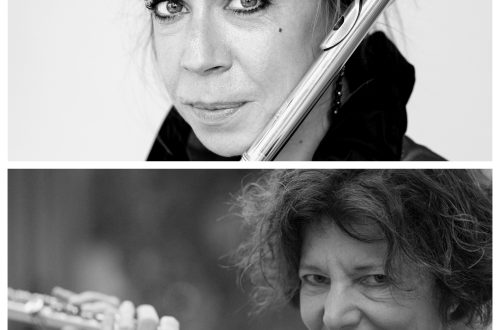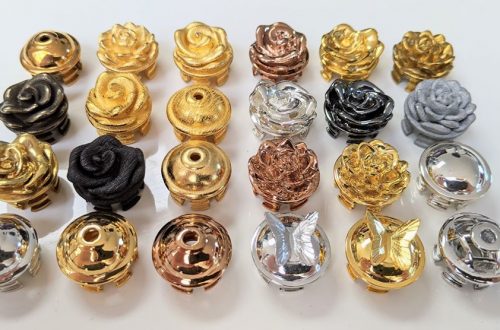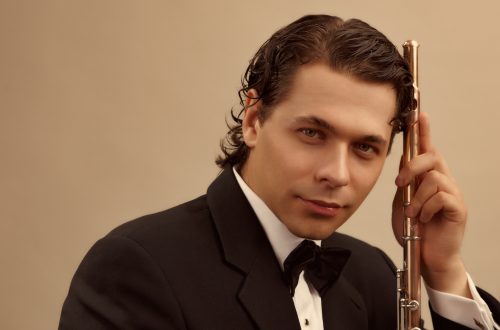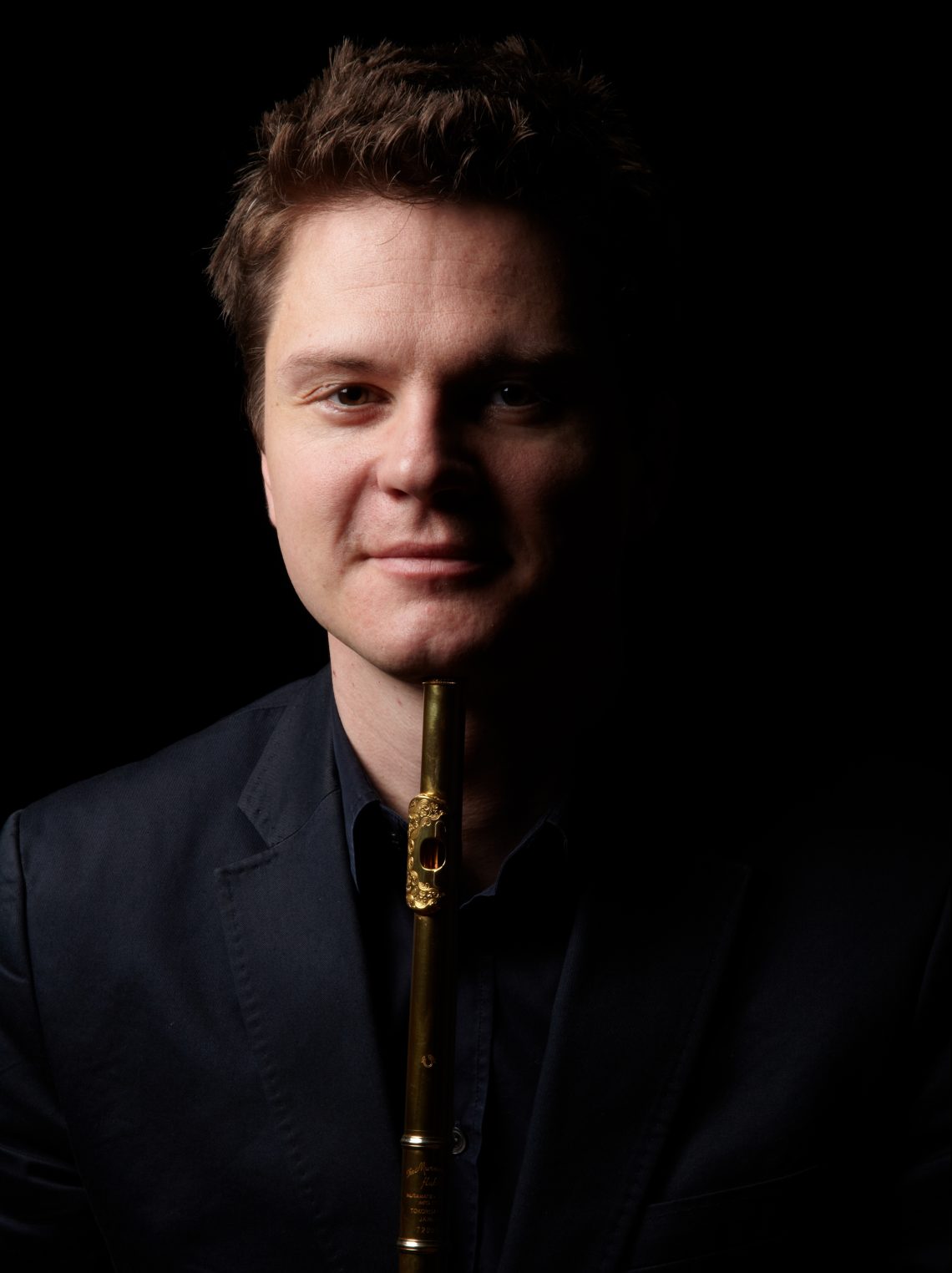
Interview with Karl Heinz Schütz
On 15 April the ÖFG met Karl-Heinz Schütz and talked to him about the recent Nielsen Competition in Odense/Denmark, where he chaired the jury this year and was responsible for the new programme.
öfg: Dear Mr. Schütz, you recently returned from the Carl Nielsen Competition, which you won yourself in 1998. Would you please share your impressions with us?
Karl-Heinz Schütz:The Carl Nielsen Competition takes place in Odense, Denmark and has existed for a very long time for violin, followed by clarinet in 1995 and flute in 1998. It is played every four years. This year all three disciplines flute, clarinet and violin were carried out simultaneously for the first time. Nielsen wrote solo concertos for these instruments, the violin concerto at an early age and the woodwind concertos towards the end of his life. Nordic Artist Management organizes the competition and has made it a very big event together with Medici TV!
This year I was asked to take over the chairmanship and the programme arrangements for the flute. When I took part in the competition in 1998 at the age of 22 and emerged as a winner, I was impressed by the open and warm atmosphere in Odense. In all these years the very human component of the competition has been preserved.
öfg: How is the competition organised?
Karl-Heinz Schütz: In 1998 I think we were about 50 people who were invited. This year we received over 250 video applications and invited the 24 best ones. Emmanuel Pahud, Rune Most, Thorleif Thedeen and Finn Schumacker, the CEO of the Odense Symphony Orchestra and I each made our own preliminary decisions. Then we listened together to all the tapes that didn’t have a majority and voted on who was finally invited. A very complex process. I learned a lot of different things from it: what technical standards do video submissions have to meet, how do I cope with the huge flood of data when the internet server is overwhelmed by it? A lot of experience has already gone into this for the new Orchestra Academy of the Vienna Philharmonic!
öfg: Who was on the jury this year?
Karl-Heinz Schütz: My task was to put together a jury consisting of internationally renowned flutists and musicians who, as far as possible, do not have a career in teaching. Teachers should not evaluate their own students, which means a maximum of transparency and fairness is guaranteed.
The members of the jury were: Emily Benyon, solo flutist of the Royal Concertgebouw Orchestra, Amsterdam, Andrea Oliva, solo flutist of the Orchestra dell’Accademia Nazionale di S. Cecilia in Rome, Soyoung Lee,
Solo flutist from Korea, Rachel Brown, one of the leading representatives of the historical flute. Also Torleif Thedeen, a solo cellist, and Alexander Taylor, music manager and programme director of the Oslo Philharmonic Orchestra and Fredrik Andersson, programme director of the Royal Stockholm Philharmonic Orchestra.
öfg: Why were managers invited in addition to flute professionals?
Karl-Heinz Schütz: Managers give further and different views and perspectives to the evaluation, which goes beyond the purely flute-specific. They can help with jury decisions, with moments when the decision-making becomes flute-orientated and would otherwise go round in circles. A music manager who says “This personality interests me” can, of course, influence decisions about music careers and that was a small part of the Nordic Artist Management´s intention in organising the competition.
And don’t forget that we heard 24 flutists from 250 entries. That means we hear and see 24 of the best young flutists of this generation. The jury can concentrate on things like musical personality, charisma and stage presence.
öfg: Did the jury mostly agree or was there much discussion?
Karl-Heinz Schütz: I found the jury’s work to be very homogeneous throughout the entire competition. Of course we had discussions, but in the end the jury always pulled together. There was only one situation where we flutists and the other members of the jury were completely opposed to each other, and that was about very flute-specific things in the commissioned composition! But that was easy to explain.
öfg: Does such a competition win help you climb the career ladder? How did it go for you?
Karl-Heinz Schütz: I was in my second year when I won the competition. For me it was, if you like, the start, or the key to an international career. It’s a great competition, a great reference, which I’m still proud of today and it was a great honour for me to be there this year.
In 1998 it was my greatest wish to play the Nielsen Concerto with an orchestra and to my own surprise I managed to do that and the first prize was the perfect addition, something I will never forget! And then, little by little, more engagements followed. The organizing agency Nordic Artists Management´s strategy in 2019 in any case is to pass on the winners of the first prizes, and then a CD will be made and there will be further engagements.
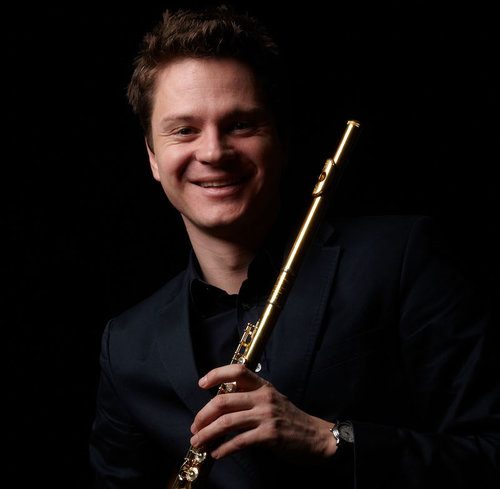
öfg: Has anything changed in the 21 years since your success in 1998 from a flutistic point of view?
Karl-Heinz Schütz: That is an interesting question indeed, because together with Emily Beynon, for example, we found out that it was nice to see and experience that you can still hear very well where someone comes from: despite the statement that in terms of ‘sound’ everything is at the same level internationally nowadays. There is a lot of native language and culture to be heard, wherever people come from: the cultural treasure is very rich, which you could hear in flute sounds here!
Josephine Olech, who studied at the Paris Conservatory with Sophie Cherrier and Vincent Lucas, has won has once again given the French flute a strong sign of life. The second and third prizes went to Marianna Julia Żołnacz, Klasse Michael Kofler, Salzburg and Rafael Adobas Bayog, Klasse Andrea Lieberknecht, Munich.
Many interesting personalities could be experienced in all the rounds and different sound ideas and ways of making music were observed! It was a real pleasure!
In terms of sound, the three prize winners, for example, are not at all similar to each other.
The international level is very high and the participants of this year’s Nielsen Competition came from Europe, Asia, Russia and America. If you look at the streaming accesses, the flute competition was the most successful compared to the other instruments. The Nielsen Concerto is very important for us flutists and it is very important for the identity of this competition.
öfg: Were there any other innovations in the competition under your direction?
Karl-Heinz Schütz: In consultation with Emmanuel Pahud, who chairs the competition committee as artistic advisor, and Nordic Artists Management, we were able to achieve something in the programme arrangement that has never been achieved before in this form:
The task was to use the programme arrangement to find outstanding performers and great artistic personalities. So we deliberately took a step away from the classical flute competition, with its usual standard works, and I would say developed it further.
The program decision was as follows:
- First round: Bach organ trio sonata in an arrangement for flute and piano. The contestant could choose from four different sonatas. The standard repertoire of Bach flute sonatas always cause strong and sometimes naturally diverging jury opinions. Here, on the other hand, we were free from the usual prejudice and the interpreter was also able to leave the beaten track.
- Thomas Larcher, an Austrian composer and a friend of mine, composed the piece “Deep Red, Deep Blue” for flute and prepared piano for the competition. He quotes Pink Floyd. The piano is prepared with little effort. The work is wonderful to present – comparable to other Concours pieces like Dutilleux-Sonatine or the Fantasy of Georges Hüe.
- The third piece was a French piece, either Sancan or Dutileux Sonatine or Gaubert Ballade.
- Second round: In this round, we ventured into a pioneering act. Traditionally, a complete long sonata with piano from our repertoire and one of the greatest classical solo pieces of the 20th century is always played here:
But Emmanuel and I wanted “something new”: “Play around Nielsen.” The idea was for the candidates to create a collage in which they put Nielsen’s music in dialogue with the great modern solo pieces and other flute music from all centuries. And that in a certain percentage 51% music “after Berio”, up to 20% Nielsen and the rest free from 1700-1959. We received collages which could be called “ready for printing”: goose bumps! The highly impressive competitor ideas knew no boundaries to their ingenuity: Especially Rafael Adobas Bayog was very special impressive here!
Before their performance, the candidates briefly introduced themselves with a pre-recorded video message and communicated their motivations, what their piece consists of and what is particularly close to their hearts.
All in all, we have been able to get to know a huge amount of less played pieces created by contemporary composers! The idea of the collage technique made it possible to get to know only excerpts of some works, which whetted the appetite for more! - In the semifinal: C. Ph. E. Bach D minor Concerto with small string ensemble and harpsichord or Benda E minor, pre-classical concertos, or three Vivaldi concertos as a unit. The flutists conduct the concert of the third round themselves without a conductor.
- In the final: Nielsen concerto and Mozart G major concerto (2/3rd movement) with orchestra.
Thank you very much for the conversation!
This interview has been brought to you by Mirjam Mikacs and Sandra Stini (ÖFG) 15th April 2019.


